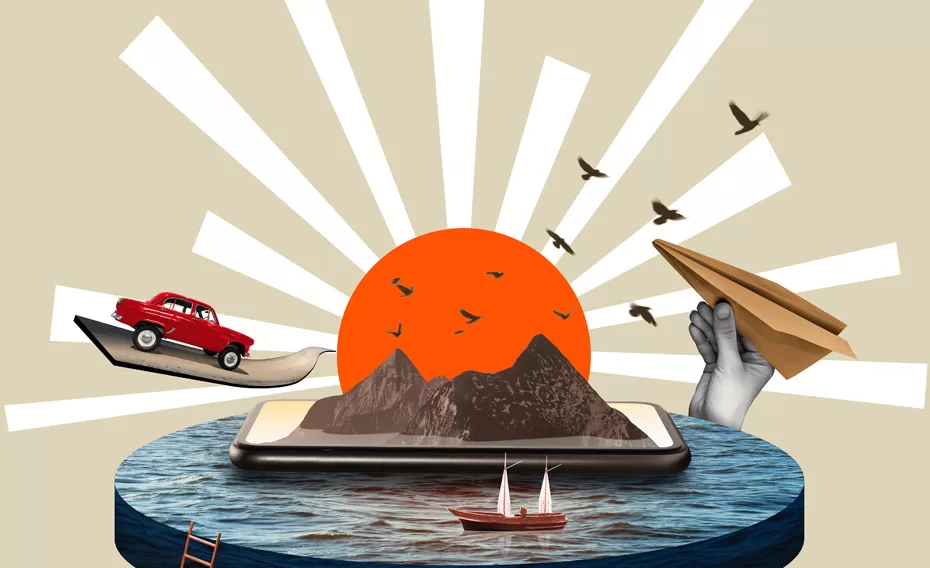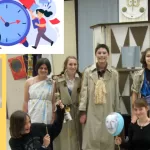Style is important in every problem, not just the performance problems. Teams are encouraged to develop a theme and incorporate creative elements into their solutions in technical, vehicle, structure AND performance long-term problems.
Coaching teams on Style can seem intimidating, but it can also be fun! The Style category gives teams the opportunity to break out, try new things, experiment with wacky ideas, and distinguish their solutions. It is creativity unleashed.
What is Style?
The Program Guide states that “Style is an added element that enhances the presentation of the solution.” That is a very Odyssey way of saying that Style is what makes a performance shine.
We like to say that Style is the team’s WOW factor. Style makes the team’s performance memorable to the judges and audience members. It is the team’s unique flair or twist that will make them known as “the team that did that […] wild thing.” It’s the opportunity for the team to try something they’ve always wanted to include in a performance and get points for their hard work.
Style can distinguish you as the team that went above and beyond by doing something not specifically asked of you in the Long-Term Problem. This tends to be a very fun, creative experience for teams, and all ideas should be encouraged.
From a team member’s perspective, Style is where you get to get weird & show off!
How do the Style Elements Work?
There are five style items with a maximum total score of 50 points. Four individual Style elements are scored at 1-10 points each. Two of those are required, and two are free choice of team.
The fifth scored item (up to 10 points) will always be the overall effect of the four Style elements in the performance.
Required Style Elements: The required Style elements are specified within the problem. These are scored in every team’s solution for that problem. Teams must choose the part of their solution that meets the required criteria.
Be specific! If a required element is, for example, “the creative use of materials in the Sidekick’s costume,” then provide the name of the Sidekick character and a brief description of what the judges are looking for in the costume in your Style paperwork.
Free Choice Elements: The only requirement for free choice Style elements is that they cannot be items that receive score in long-term scoring. If “all aspects of the ringmaster character’s costume” are being scored in long-term, for example, then nothing from that costume can be chosen for Style.
Know the backstory of the items you list (who came up with the idea, how the team made it) so the team can share that information with the judges after the performance.
Overall Effect: All 4 elements should be connected and tied together with a unifying thread. They shouldn’t be random picks. They shouldn’t be chosen at the last minute. These are as important as long-term elements. The judges will look at all 4 elements and consider how they enhance the presentation. Plan from the beginning for how the items will enhance the performance.
What Types of Things Can Be Scored for Style?
Anything in the solution that is not already being scored is up for grabs! Style can be visual: a prop, a material, a costume, or a set. It can be auditory: a sound, a song, a poem or a rhyme. It can be a method: a way of assembling a prop, the creativity of a team-made machine, or a character’s sense of humor. Style is not necessarily something you can touch, but it is something that makes the judges feel.
Don’t Leave Judges Guessing
For free choice Style elements, it is up to the team to decide how broad or narrow to be in their selections. For example, let’s assume a team has decided one of their props — let’s call it The Infinity Cube — is particularly creative. They would like it to be scored for Style.
The team could choose “The Infinity Cube,” in which case all aspects of the Cube, from creativity to construction artistic quality to effectiveness will be scored.
There may be an aspect of the Cube that the team thinks is particularly amazing. In that case, they may choose the “materials used,” the “construction of,” the “method of painting” or any other specific aspect of The Cube they want scored.
The Style paperwork provides a space for the team to describe their Style elements. Be sure to use this space to explain how everything relates to a theme or effect, and to elaborate on individual Style elements.
Encourage Questioning
Encourage teams to think about how their Style choices could impact their score. It helps to choose a motif, theme or mood for the solution and keep this as a basis for all parts of the solution. Here are some things the team can consider:
- What skills do your team members have that you want to highlight?
- Do any of your team members have weird or unusual talents?
- What are you itching to try that you haven’t attempted before?
- How is this related to our long-term problem?
Don’t be afraid to use a talent that might give your team an advantage against the competition.
When Should I Start Thinking About Style?
Immediately! When your team starts reading the problem, the ideas start flowing. Some of these will work within long-term scoring requirements, and some might now. But every idea might work with Style! Think about Style again after processing the long-term problem. Then again
when a team member does something that makes you laugh. Then again when you’re brainstorming ideas for your problem solution. Then again when you start writing the script and designing the props & costumes. Don’t wait until you’re filling out the paperwork. Think about Style from the beginning.





